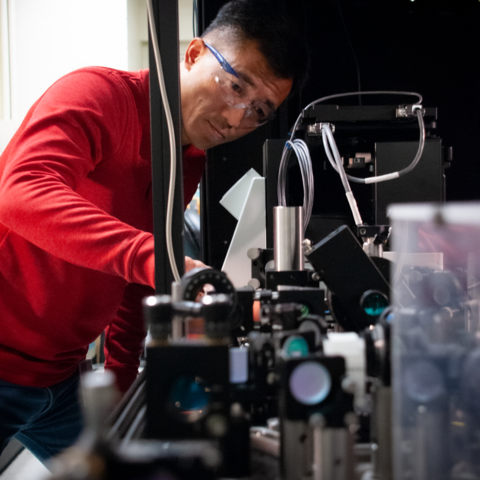
What are you made of? With a new measurement technique from NIST’s Young Jong Lee, scientists can answer that question on the cellular level with 100 times more precision.
Right now, scientists use infrared light to see what molecules make up a sample under their microscope, but this conventional practice has its limits. If the sample is a biospecimen like tissue from a cancer biopsy or stem cells for a treatment, it contains lots of water, which absorbs the infrared light. To get around this, scientists replace the water with a waxy material or use a reflection from the bottom of the cell, both of which run the risk of affecting the results.
Young is helping the scientific world leave those practices behind with an adjustment to the spectrum of the infrared light. Tweaking the light to eliminate the water absorption obstacle, his measurement method has about 100 times better chemical sensitivity. That means it provides lots more data on important things such as the activities happening inside a cell in real time.
In December 2019, Young put his research to the test with the Technology Maturation Accelerator Program, pitching his project to a group of venture capitalists looking for work that could easily transfer from the lab to the marketplace.
Follow us on social media for more like this from all across NIST!

